This is the food to order when you visit the south of Spain – a top 10 of the most popular dishes found throughout Andalucía.
Article by Victoria Wood
The Mediterranean Diet is widely considered to be the best in the west; one largely built on local and seasonal produce, served with lashings of olive oil. The south of Spain is heavily influenced by the Moors and you’ll find Arabic inflection everywhere you go, especially in the foods.
This was not the easiest list to put together simply because there are far more delicious dishes available in the south of Spain than I could possibly write about in one blog! So, to keep it manageable I have gone with a top 10 of the most popular dishes found throughout Andalucía. You’re likely be able to find all of these in most traditional Spanish bodegas, tapas bars, or restaurants from campo to costa.
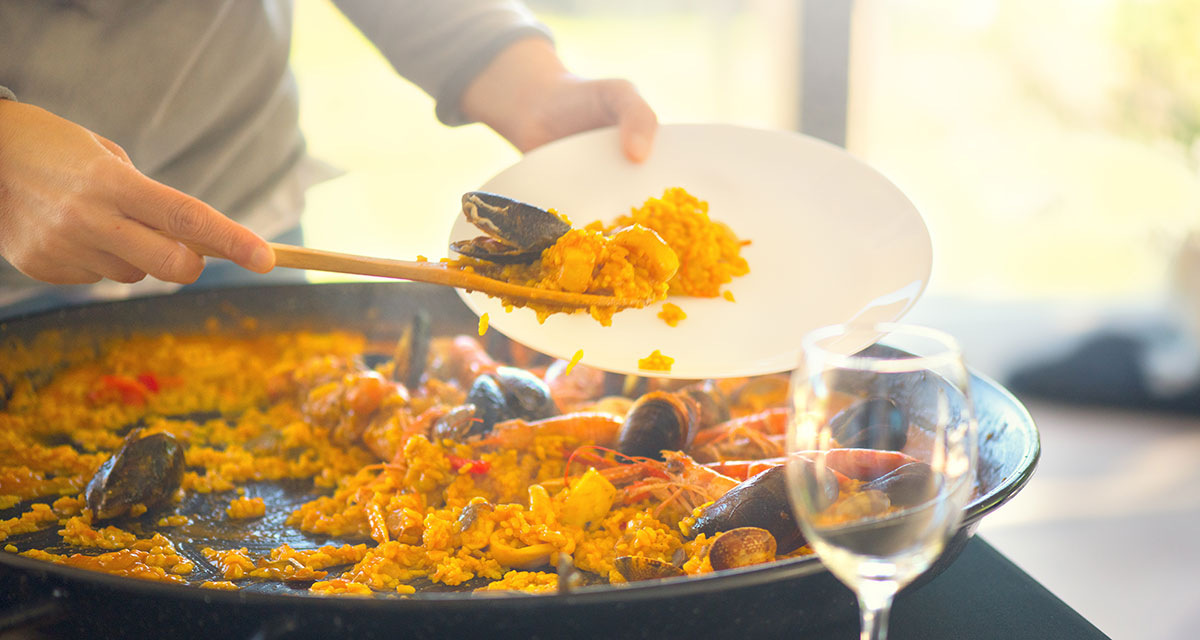
1 – Paella
Probably the most famous gastronomical delight that the Spanish have brought to the culinary table, as well as the most variable. You will find different ingredients, versions and variations all over the country, but generally in the south of Spain you’ll find a seafood paella, a meat paella, or a combination of the two all containing a variety of vegetables as well as the rice, as options. There are also countless other rice dishes stemming from paella – the literal meaning being the pan in which it is cooked. This dish originated in Valencia on the East coast of Spain and was a humble farm workers lunch of rice with just about anything that was going thrown in; this would have been tomatoes, snails, beans, onions and, if they were lucky, some local game such as rabbit, duck or chicken. Saffron was added when available which gave it the famous yellow tint. The meal was eaten directly from the pan using individual wooden spoons and shared by all. Since those days there have been countless arguments on how a true paella ought to be cooked, it is well known that seafood was a later addition to the dish, as were red peppers, and I doubt the farmers in Valencia would have placed lemon wedges anywhere near it! Paella is a communal, sociable dish often served at family gatherings and celebrations, hence the immense size of some of the pans they are cooked in, and remains one of the most widely available, popular meals in the country.
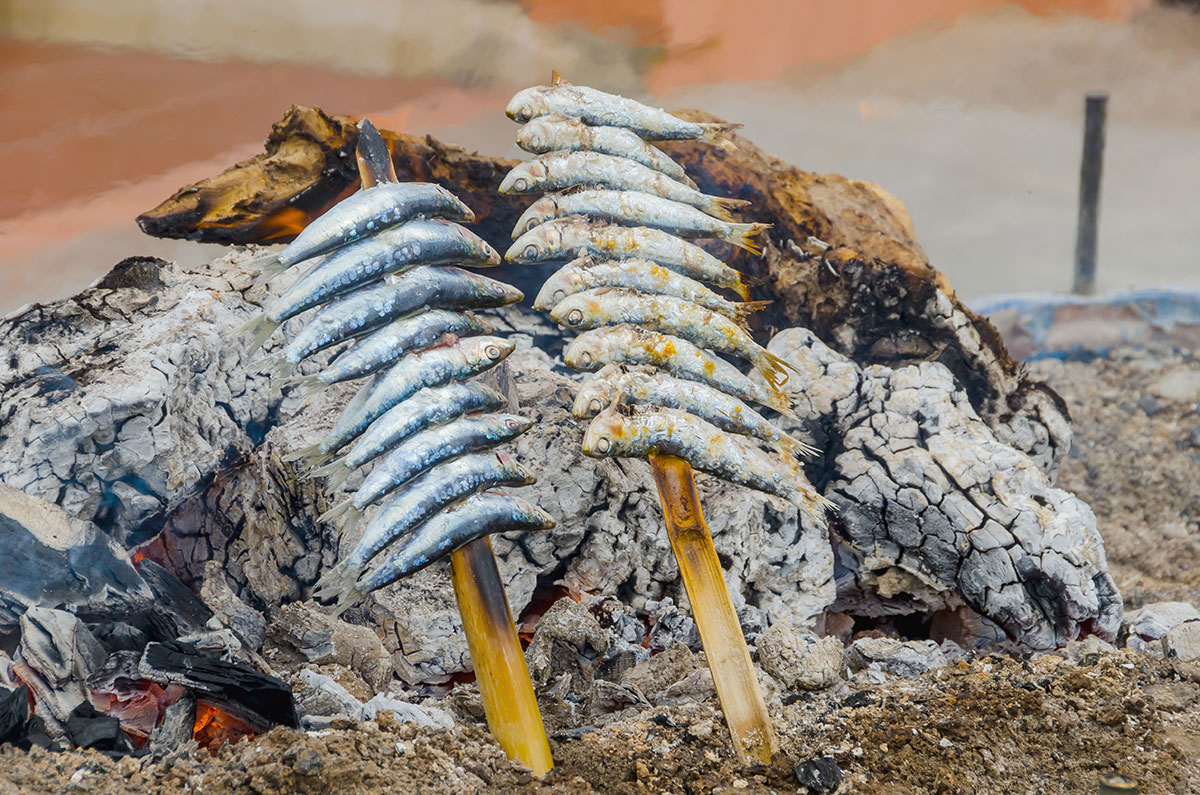
2 – Espetos
When near the coast in the south of Spain, especially the Malaga region from where they originate, you’ll be able to note the unmistakeable aroma of the ‘espetos’ cooking on the beaches. This stems from disused wooden fishing boats filled to the brim with sand and recycled as a fireplace for cooking an array of different seafoods. The most traditional and popular of which being the humble sardine. The cook will take a large skewer (espeto), generally made of cane, and spear as many of the fish as will fit, then place the skewer in the sand to be cooked over the open wood fire. The smoky, salty flavour of the sardines is unbeatable and unrivalled and is one of the most popular sights, smells and tastes of the south coast.
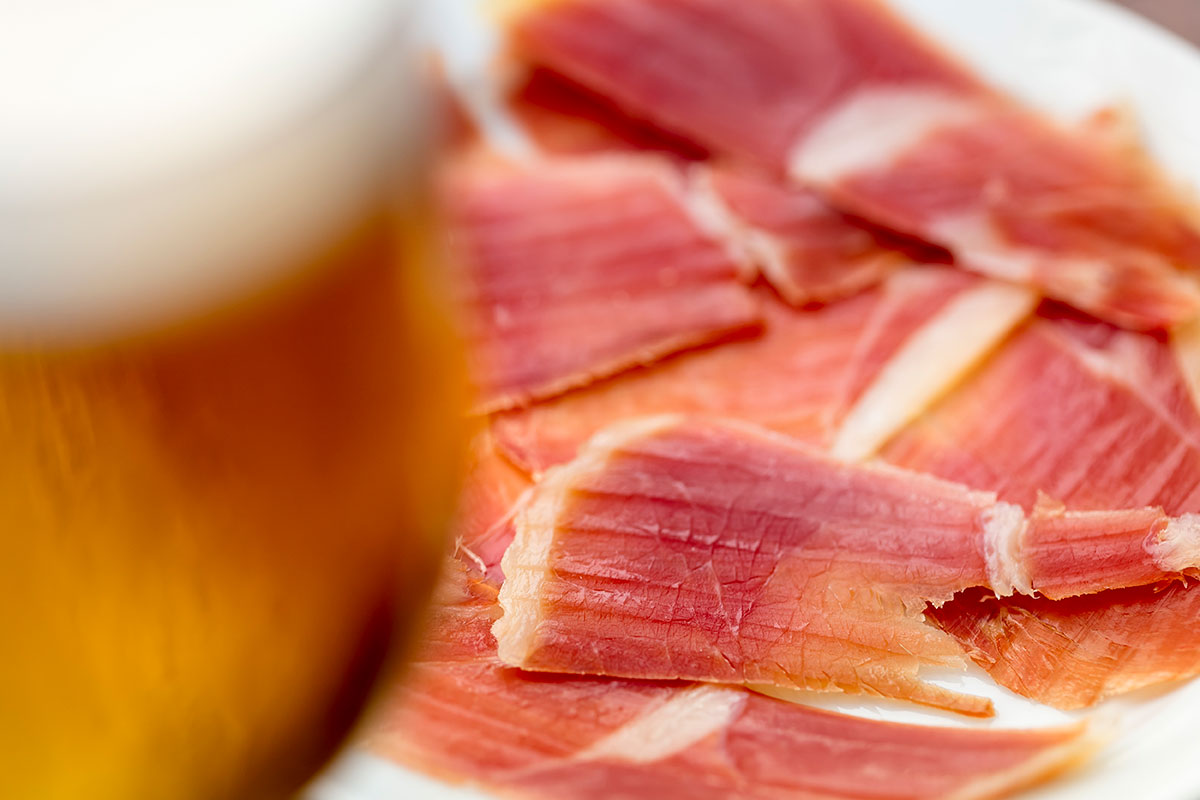
3 – Jamon Ibérico
Iberian ham is the ultimate flavour of Spain and is as iconic as it is delicious. There is an extremely large range of quality of ‘jamón’ across the country but the most exquisite, highest grade ham comes from the Iberian, acorn-fed Dehesa pigs bred and raised in Andalucía, Extremadura and Salamanca. The particular breed of pig is that of the Iberina Pata Negra (black hoofed pig) which is a traditional Spanish pig bred with native wild boar. The pigs roam free and feed on fallen acorns from Holm, Gall and Cork Oak trees making their meat fat-streaked with a melt-in-the-mouth texture that is intensely rich in flavour.
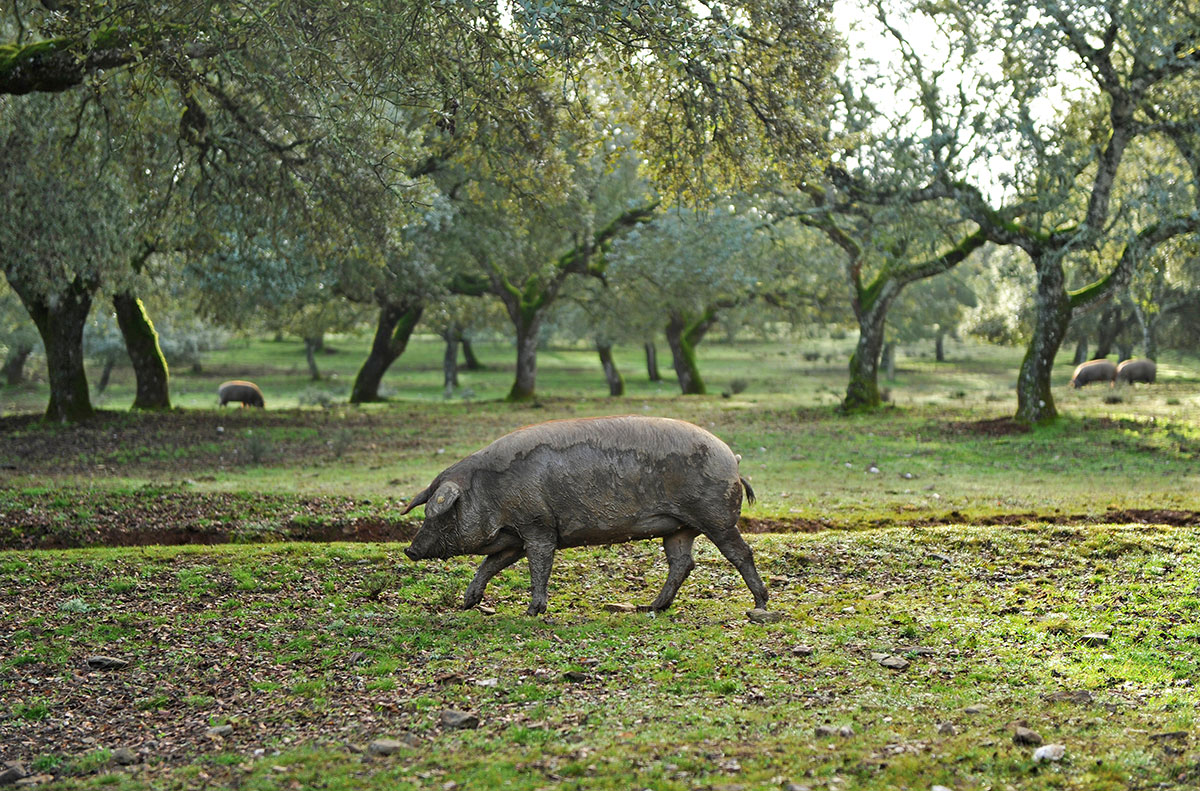
There are three types of Jamón Ibérico: Bellota – free range oak-fed pigs, meat cured for 36 months or longer, Recebo – pigs fed in pasture on grain and acorns, meat cured for 36 months or longer, and Cebo – grain-fed pigs, meat cured for up to 24 months. Even slicing and serving the ham is an art form and not one that is easily achieved. Slices must be wafer thin and cut in a particular direction from the bone using specific knives and a stand. Order with a side of olives and some quality Manchego cheese and you’re in Iberian heaven.
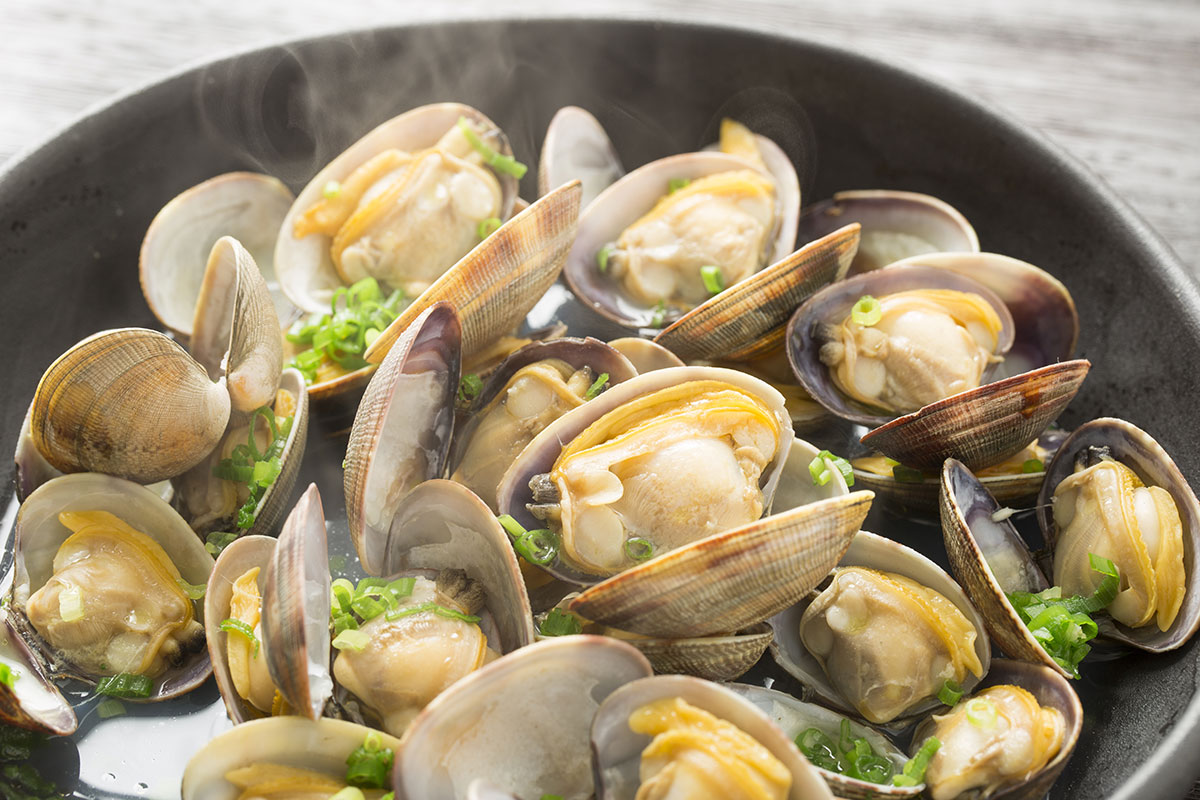
4 – Almejas or Coquinas
I elected to place these side by side on the list as often you can get one but not the other in some restaurants generally due to availability. Both are equally delicious and generally cooked in the same manner; steamed open in garlic, parsley and white wine. The coquinas (cockles) are slightly smaller and sweeter than the almejas (clam) but both stem from similar seafood origins. This is a classic Spanish dish generally served as a starter alongside other seafoods, salads and vegetables. Place a serving in the centre of the table, take a helping and slurp the little delicacies out of their shells one by one. You’ll be left wanting more but there’s always the bonus of the delicious sauce to mop up with some local bread.

5 – Tortilla Española
Another Spanish classic dating back as far as 1800, which is undeniably one of the best versions of anything resembling an omelette. The tortilla, when made correctly, is packed with sliced potato and will sometimes reach doorstep proportions in stature. The outside will be fried to perfection with a slightly crisp edge and the centre maintaining a slightly soft and oozy texture. And unlike many other Spanish dishes, the recipe remains the same throughout the country – though many feature onion and some versions may contain chorizo or spinach. On my travels around the south of the country I have noted some of the best tortillas are to be found at the restaurants that border a petrol station. The reason being that this is where all the local workers stop to grab a morning coffee and something substantial on which to start their day, and a wedge of a proper tortilla is definitely that.
6 – Gambas Pil Pil
A firm favourite with locals as well as tourists, and practically anyone who likes prawns, garlic and a little heat. These come sizzling and bubbling hot in oil with heaps of chilli, paprika and garlic and there’s always plenty of sauce to be soaked up with bread after you’ve devoured all the prawns. The dish is of Basque origin but is found throughout the country as a staple dish on most menus. The term Pil Pil is the Basque name for the sauce the prawns are cooked in, however the inclusion of the seafood is claimed by both the Basques and the Andalucíans. The hot spicy peppers were originally brought in from the north of neighbouring Africa.
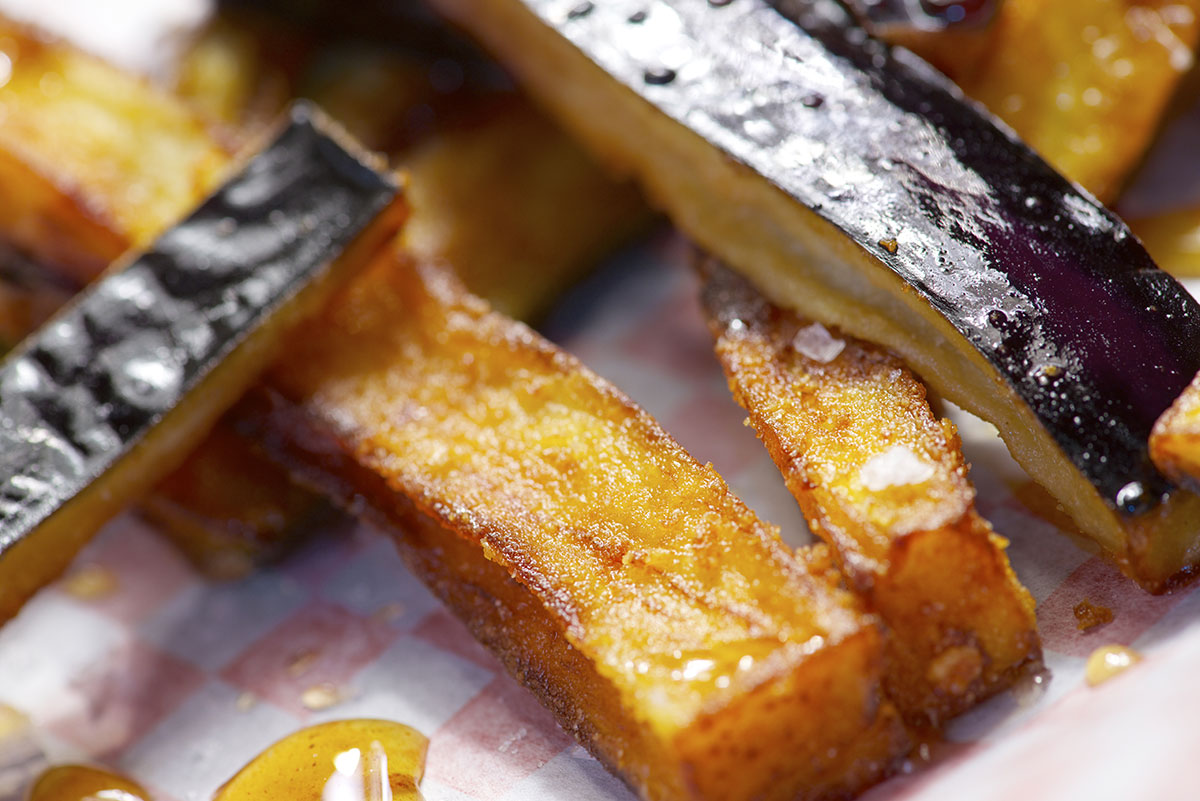
7 – Berenjenas con Miel
This translates as aubergines with honey, yet the traditional way to serve them is not with your typical honey but miel de caña, or cane honey, which is a runny, dark coloured syrup with a rich, deep flavour similar to molasses. The aubergines are thinly sliced, battered and fried then served drizzled with the syrup and sometimes sesame seeds, combining a delicious combination of sweet and sour. They are often served as a starter, tapas, or side dish and have Moorish origins but became popular in the provinces of Córdoba, Málaga and Jaén.
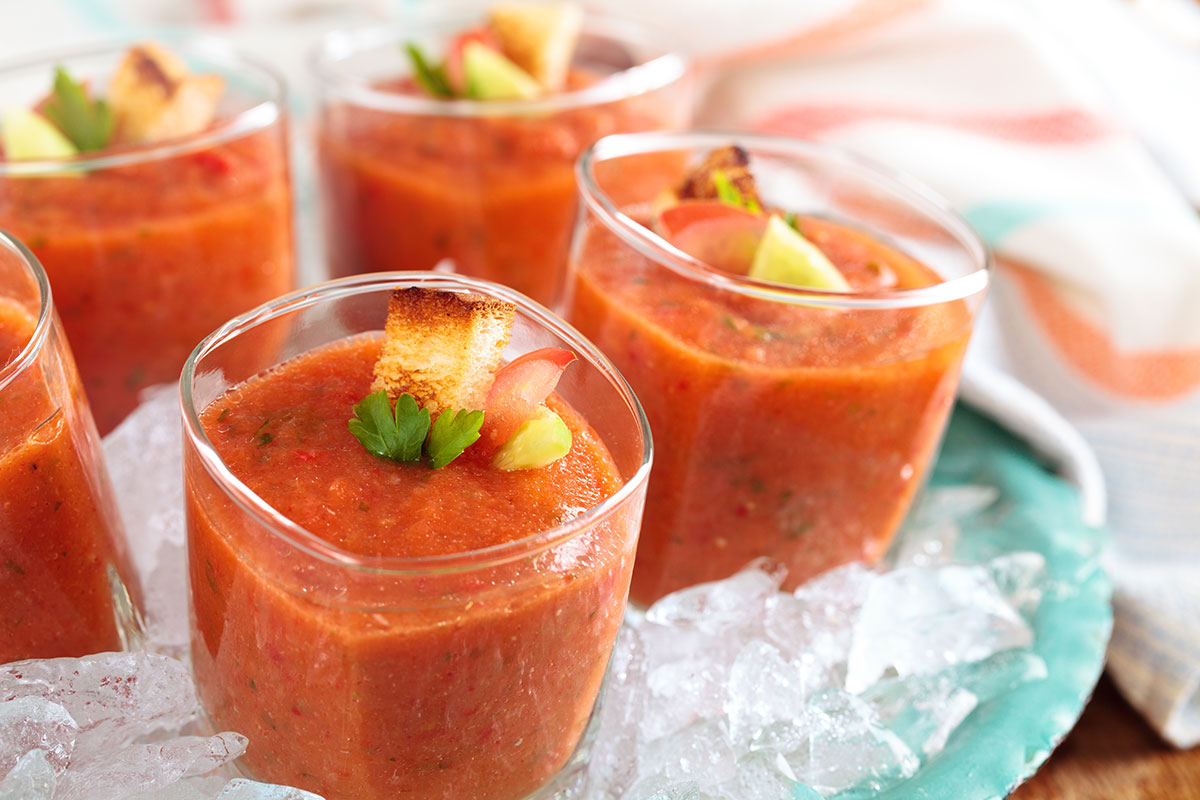
8 – Gazpacho or Salmorejo
These are undeniably quintessential Spanish fare and a veritable ‘Marmite’ amongst tourists – you either love it or you hate it – some folks not warming to the idea of a cold soup! The true origins of Gazpacho are said to stem from a blend of stale bread, olive oil, and garlic mixed with vinegar and water to loosen, served cold to refresh workers during the hot summer’s days. Sometimes this included nuts and vegetables depending on what was available. Over time the Andalucíans took this notion and developed it into the recipe known to us today – thanks to Columbus bringing over the cucumber, tomato and peppers! The ingredients generally stay the same though the ratios may vary from place to place. The traditional favourite gazpacho is served chilled in a glass and is made from ripe tomatoes, a little garlic, hard bread, cucumber, green bell pepper, red bell pepper, onion, carrot, cumin, water, olive oil, vinegar, salt and pepper. Salmorejo has a tomato and (more) bread base combined with oil, (more) garlic and vinegar, and is served cold often topped with Jamón pieces and diced hard boiled egg. A perfectly light, healthy and refreshing start to a long lunch by the Med.
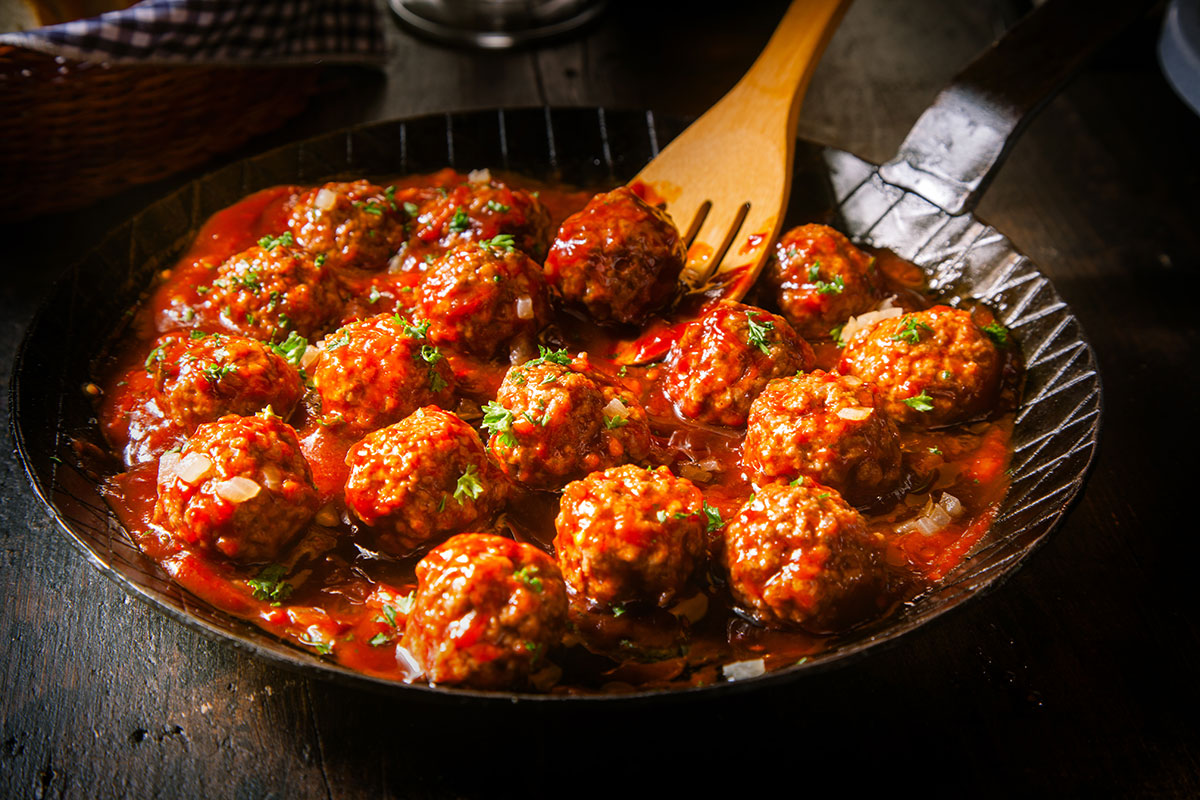
9 – Albondigas en Salsa
These are literally translated as meatballs in sauce and while this may not conjure up the most incredible of dishes in the mind, they are a staple in most tapas bars in and around Spain. Every family has their own recipe and way of doing them, and most are simply delicious. The variations generally come from the ingredients in the sauce, and perhaps the meat they are made from (which is left to the creator’s preference). A traditional version of the sauce is made from simple ingredients such as onion, carrot, garlic, flour, white wine and olive oil. Others play with the tomato as their base, and some use almonds as the main flavour and texture provider. Wherever you go in the south of Spain, you’ll be sure to find meatballs on most tapas menus, always make sure they are homemade or ‘comida casera’, ask what meat was used and what the sauce is made from to get an idea of what you’re about to try. These are great ordered alongside a range of tapas and mixed salad.
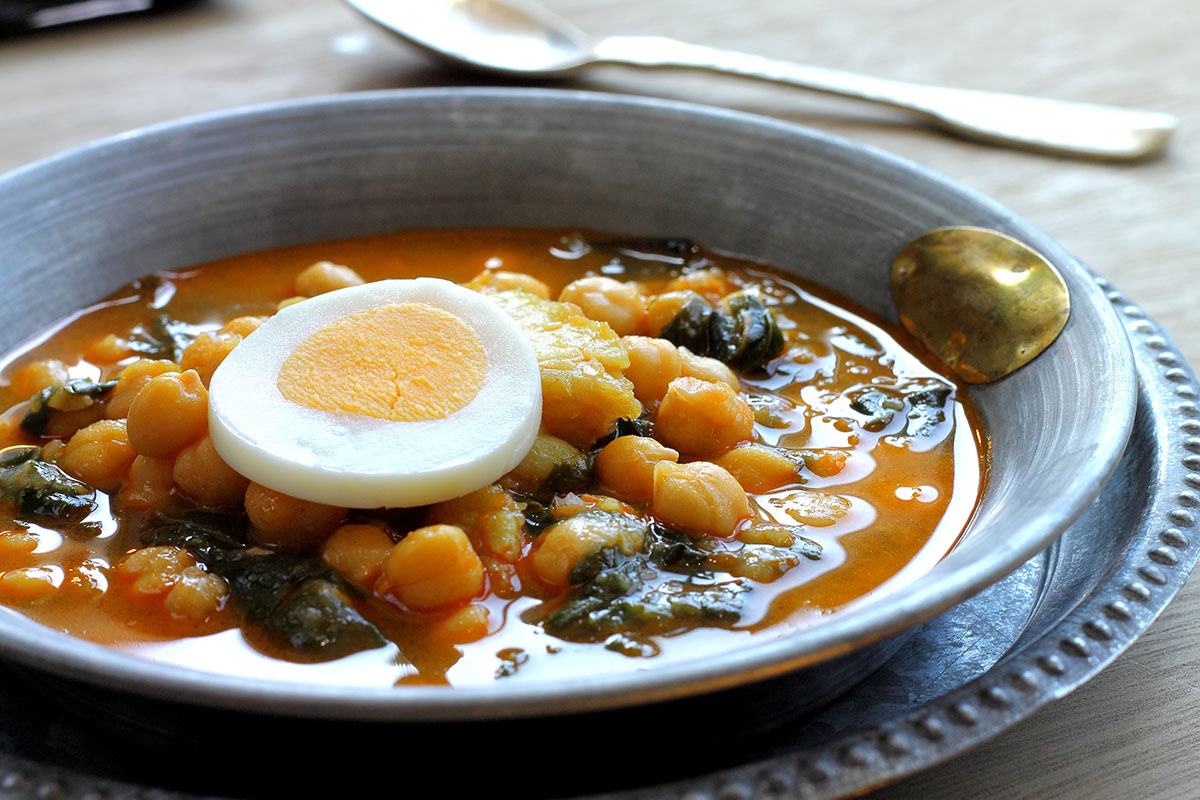
10 – Potaje
Literally meaning soup, but offering more of a stew-like depth and consistency. This is one for the winter months as it is a heart, mind and body warming dish containing whatever ingredients happen to be available. For this reason the dish varies considerably from place to place, often involving local plants that have been foraged from the countryside and a good helping of pulses – either chick peas, white beans or lentils in a stew/soup type dish. Chorizo or morcilla or even tripe (callos) may feature, as may smoked ham hock, chicken or other local meats, but this can also be simply a vegetarian affair with potatoes and greens. A typical dish at a restaurant offering a ‘menu del día’ traditionally as a course served to labourers to fill them up during their lunch break and prepare them for the remainder of the working day.
Spain’s gastronomic delicacies range far wider than this list but here we have offered a variety of the most popular, traditional and widespread dishes of the southern regions. Next time you visit the area be sure to try them all, and more – ¡Buen Provecho!




































































